Chal: Basic Information
Pronunciation
Alternative Name(s)
Drink Type
Mealtime
Popular Variations
Chal: Ingredients and Preparation
Main Ingredients
Main Preparing Method
Preparation Process
Chal: A Deep Dive
Cultural Significance
Taste
Texture
Aroma
Color
Serving Style
Serving Temperature
Accompaniment
Occasions
Calories
Popularity
Popular Similar Drinks
- Kumis
- Ayran
Popular Dining Area
Chal, or shubat, is a traditional beverage made from fermented camel milk in Central Asia, especially in Turkic countries like Kazakhstan, Uzbekistan, and Turkmenistan.
Due to its main ingredient, chal has a distinctly sour and raw flavor, tinged with some salty and earthy notes.
Chal is fizzy and as white as yogurt. The thin layer on top of the fermented milk is called agaran (fermented cream).
There are two main types of chal: homemade chal and store-bought chal. The former tastes richer and is less fermented and sour, while the latter is very tangy and fizzy.
Commercially prepared chal is available at many stores and supermarkets in Central Asia. Many people in Turkmenistan even consider chal their country’s national beverage.
Chal is a staple summer drink to serve with many iconic foods in the region, such as beshbarmak (boiled meat over egg noodles), boortsog (fried dough dessert), laghman (noodle dish), and samsa (baked savory pastry).
Read on, and I will tell you everything there is to know about chal, such as its health benefits, its pros and cons, the questions people ask about the fermented camel milk drink, and similar beverages.
Key Points
Chal Images
What Are the Health Benefits of Chal?
Chal is very nutritious thanks to being made from camel milk, which is richer in vitamins and minerals yet lower in saturated fat than cow milk, according to Healthline. Chal is rich in protein, vitamin C, vitamin B-complex, iron, and calcium, among others.
The Central Asian staple drink offers several health benefits, such as stimulating appetite, aiding digestion, strengthening the immune system, lowering blood sugar levels, and aiding brain function.
In addition, chal is generally safer for people with lactose intolerance since camel milk is easier to digest than many other types of milk.
With those benefits in mind, check out the pros and cons of chal to see whether you should try it.
Pros and Cons of Drinking Chal
Below are the advantages and disadvantages of chal:
Pros
Cons
After weighing down the pros and cons of consuming chal, broaden your knowledge of the fermented beverage with the popular questions people have about it.



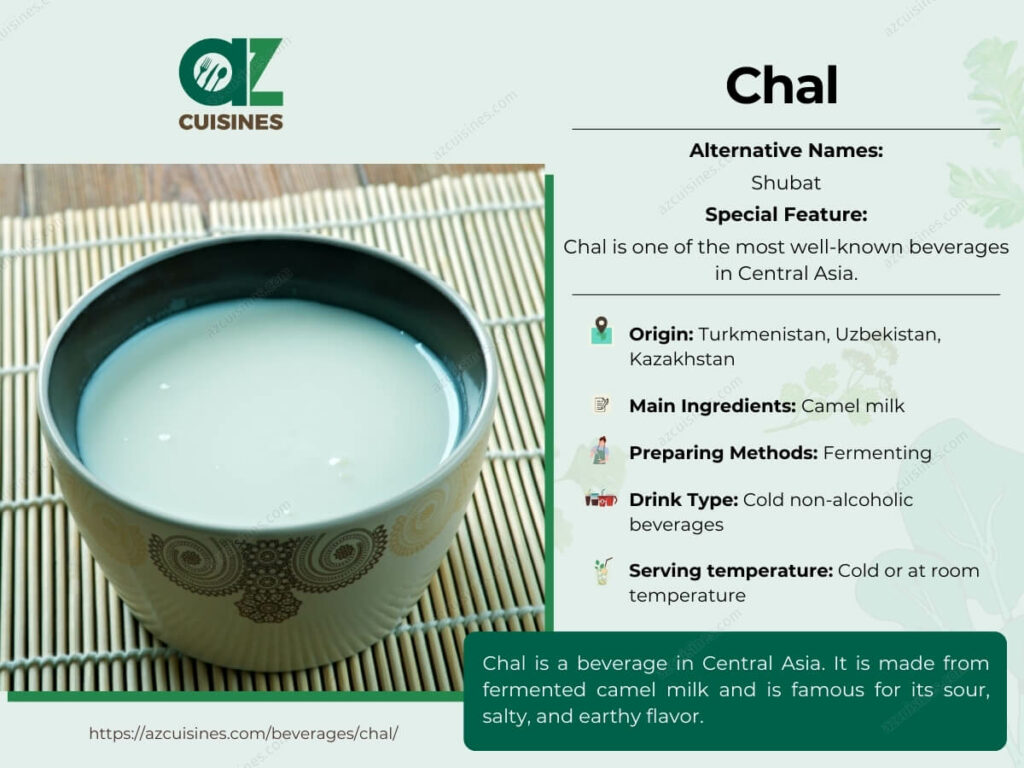

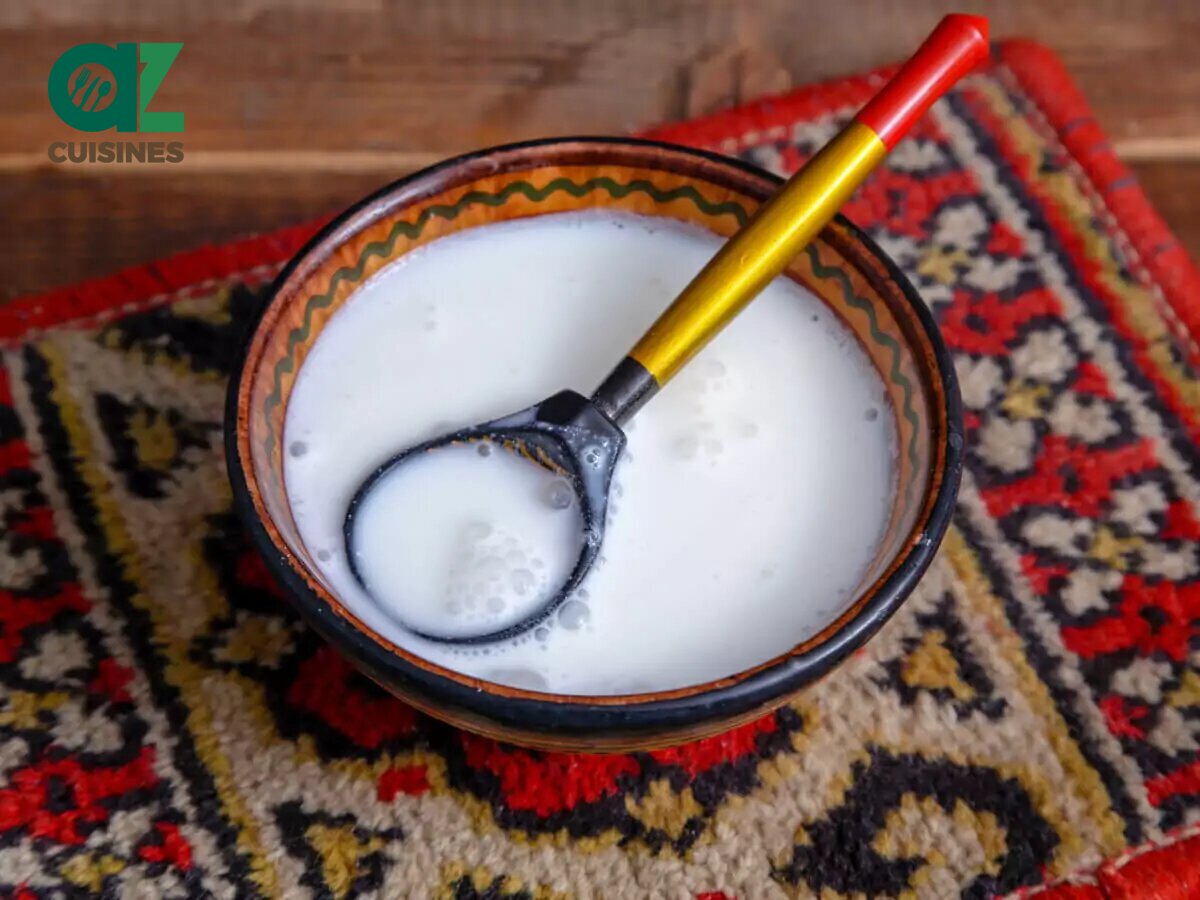
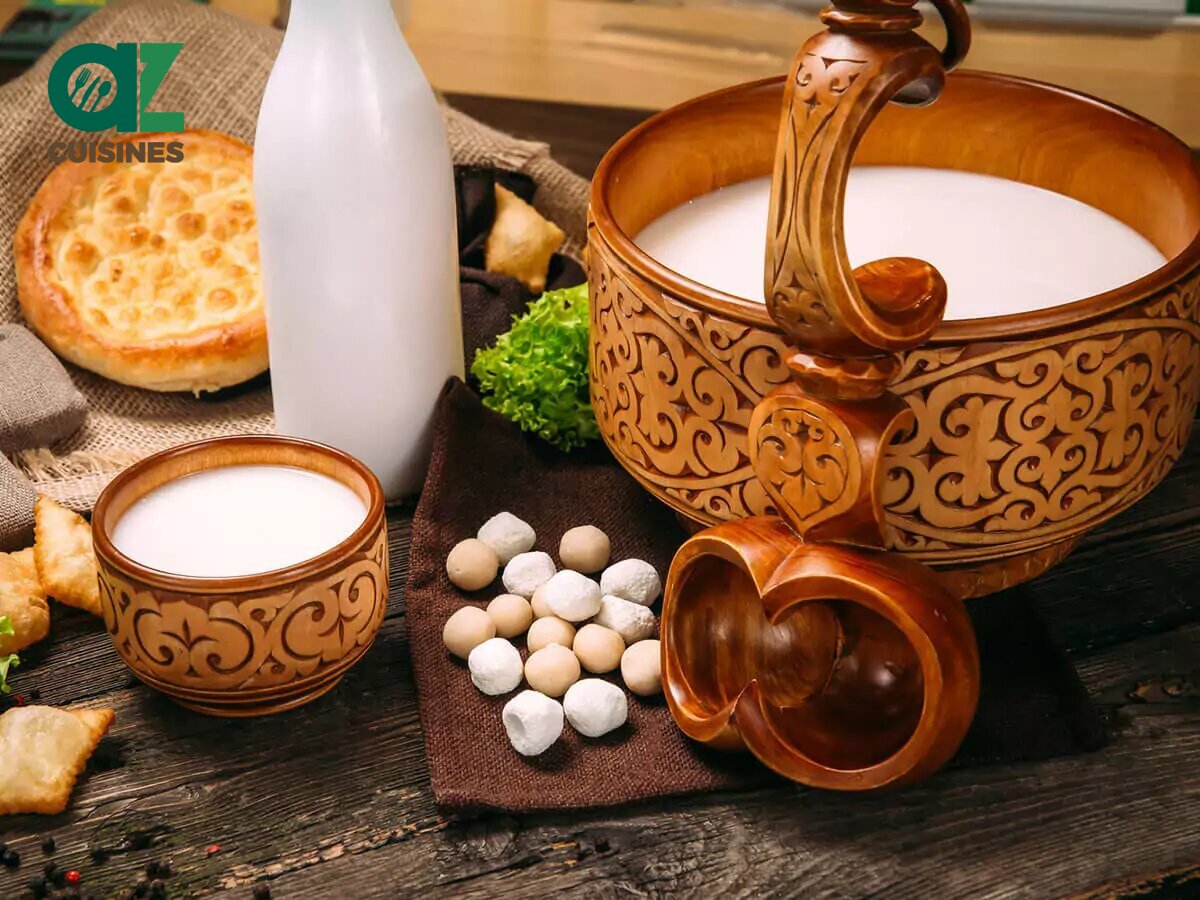
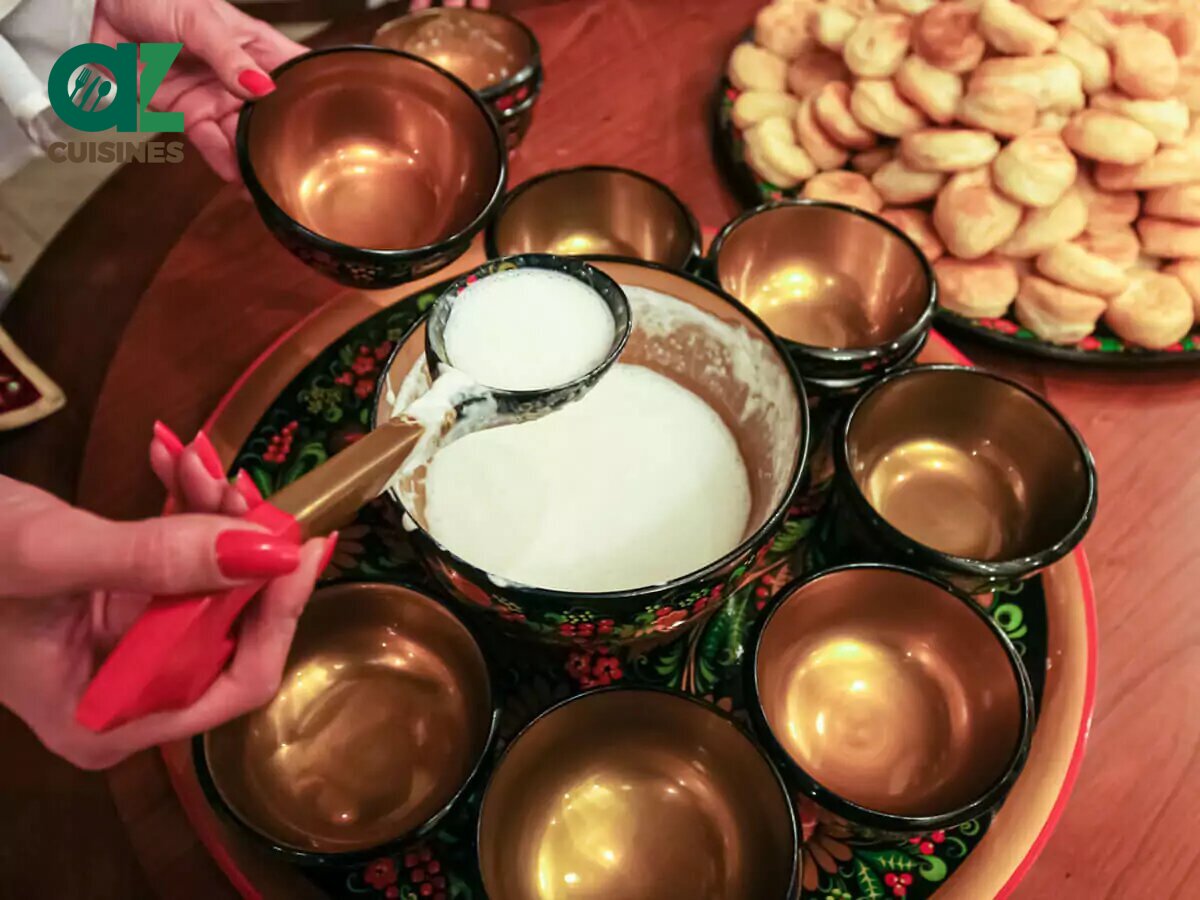
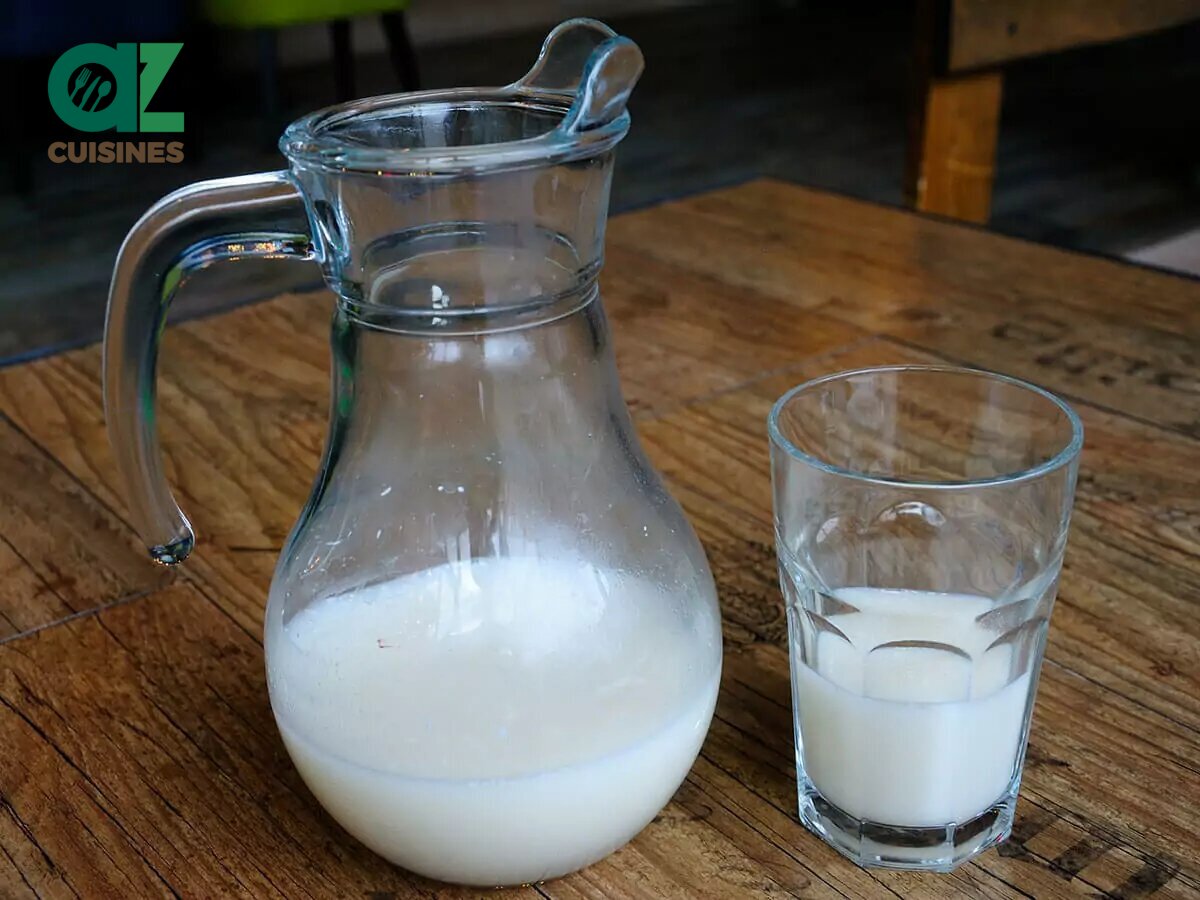


Adam Sam
Senior Food and Drink Editor
Expertise
Food Writer & Recipe Developer, Recipe Tester, Bartender, Cooking-video Maker, Editor In Chief
Education
Adam Sam, an experienced food writer and recipe developer, is passionate about blending diverse culinary traditions, national dishes, and innovative beverages, showcasing his proficiency in both traditional and modern recipe testing.
As the Editor-in-Chief, he elevates culinary content from street food to fine dining, focusing on Western cuisine and types of drinks at azcuisines.com, and is professional in creating engaging cooking videos that simplify complex dishes and ingredients.
His passion for food is evident in his writing, where he uniquely merges various cultures, traditions, and contemporary trends, skillfully combining classic recipes with modern cooking methods.